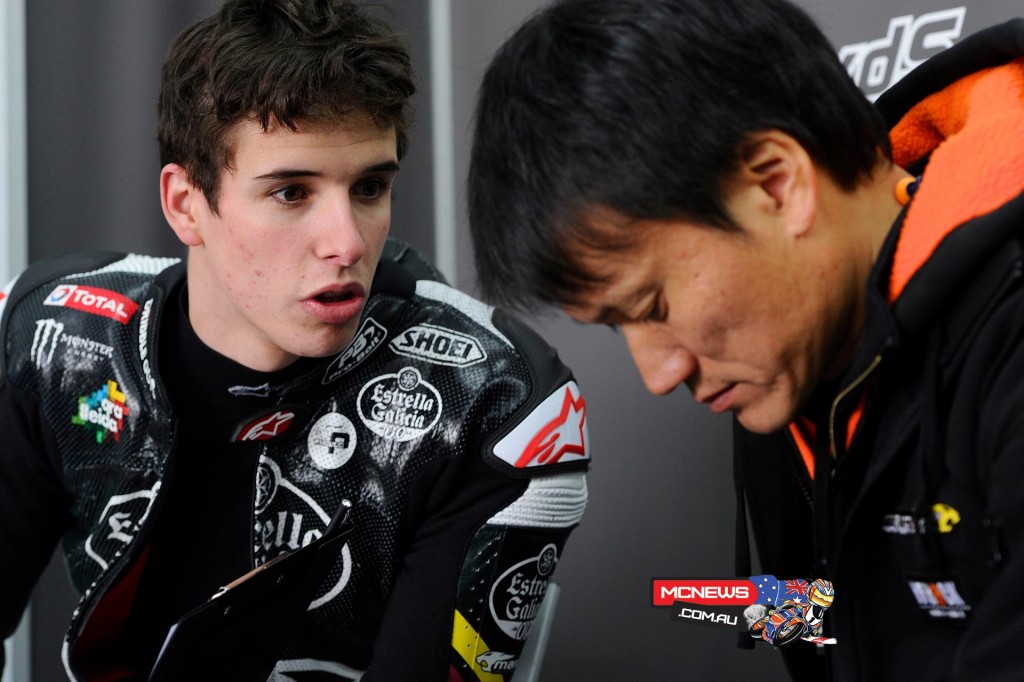Alex Marquez – Season Update
By Trevor Hedge
The two prime combatants that took the battle for the 2014 Moto3 World Championsip down to the wire chose very different paths for 2015.
Jack Miller, somewhat controversially, made the leap from Moto3 directly to the premier MotoGP category, albeit on a third on the rung ‘Open’ category machine, while he learns the big-bore ropes in 2015. While his 12-points scored thus far this season does not sound all that encouraging at first glance, Miller is actually the third highest placed ‘Open’ category rider, behind Ducati’s Hector Barbera and Yamaha’s Loris Baz. Thus Miller is currently the top placed Honda ‘Open’ rider ahead of 2006 World Champion Nicky Hayden, and the Kentucky Kid’s teammate, Eugene Laverty. With four points scoring races out of the nine races held so far this season, and a season best of 11th outright at Catalunya, the 20-year-old’s results in the premier class are actually quite encouraging. Especially as almost everyone riding a Honda this year has struggled with front end grip problems, Miller included.
Alex Marquez, the eventual victor in the battle for the 2014 MotoGP World Championship with Miller, instead chose to take the more traditional route, stepping up to the Moto2 category, and doing so on a plum seat alongside reigning champion Tito Rabat in the dominant Marc VDS squad.
Marquez is currently 18th in the Moto2 World Championship, exactly the same position as Miller holds in the MotoGP Category. Marquez’ best results came at Jerez and Assen, where the 19-year-old Spaniard, took ninth place finishes at both events.
Alex’s teammate, Tito Rabat, is currently sitting second in the Moto2 Championship, despite breaking his collarbone in a recent training accident.
Team Estrella Galicia 0,0 Marc VDS supplied us with the following interview where the younger brother to reigning MotoGP World Champion, Marc Marquez, airs his thoughts on his season thus far in Moto2.
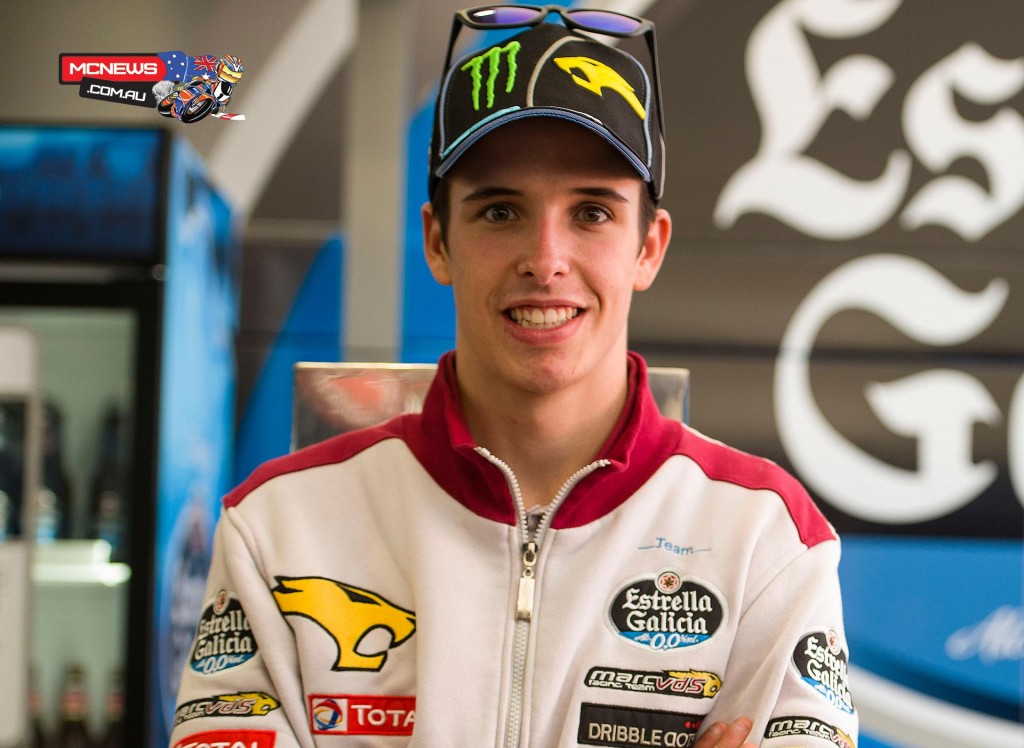
Alex Marquez – Interview
With the German GP already behind you, you’ve reached the midway point of the season. What is your assessment of your progress in Moto2?
At first it was difficult, but overall it’s positive. Moto2 is a new category for me and, after becoming Moto3 World Champion with Team Estrella Galicia 0,0, we have started a new journey and we are working very hard to try to take the positives from difficult situations. Especially important is having patience. Moto2 is a tough category in which being a second off the pace means you qualify twentieth on the grid for the race. This difference in Moto3 was not so worrying, because in the end you can save yourself by slipstreaming, but in Moto2 you either have to work well in practice or you have it very difficult to gain positions. In this category it is all very tight and it’s the little details that make you cut the thousandths of a second you need in order to fight in the leading group.

What details are they?
Above all the setup or, for example, when we arrive at a new circuit, it helps us a lot to have some references. You also have to try to ride at peak performance in every practice. A bad qualifying session puts you far back on the grid and then in the race – however hard you work in the warmup – it is very difficult to improve your times. You have to start working, mentally, from the Wednesday when you get to the circuit, so that when you go out for the first free practice very focused.
What has most surprised you about the new category?
I was warned that tyre management would be difficult, but after coming up I encountered rock hard tyres that hold up for the whole race – and even allow you to put in your fastest laps late on. I had also been warned of the problems that occur on the first few laps with a full tank of fuel, and it turns out that sometimes it actually helps you. In short, things that seem like they will be problematic initially, in my case are things that I have adapted to more easily. In contrast, other things which weren’t given as much importance I’ve found harder.

What has been difficult?
The hardest thing was adjusting to the weight difference, rather than the difference in power, because having more weight means you have to anticipate every move you need to make. For example, changes of direction with the Moto3 bike could be made 20 metres later, whereas with the Moto2 bike you wouldn’t make the turn like that. I remember at Assen, a circuit with very quick changes of direction on the quick, flowing corners, that it was a lot of work.
Which of the Grands Prix so far this season has left you with the best memory?
At Mugello we went pretty well, but I’d say the Catalan GP. It was the weekend in which we felt most comfortable with the bike and I’m sure that if we hadn’t have got hit in the race, we could have obtained a better result. Our pace was the same as the frontrunners.
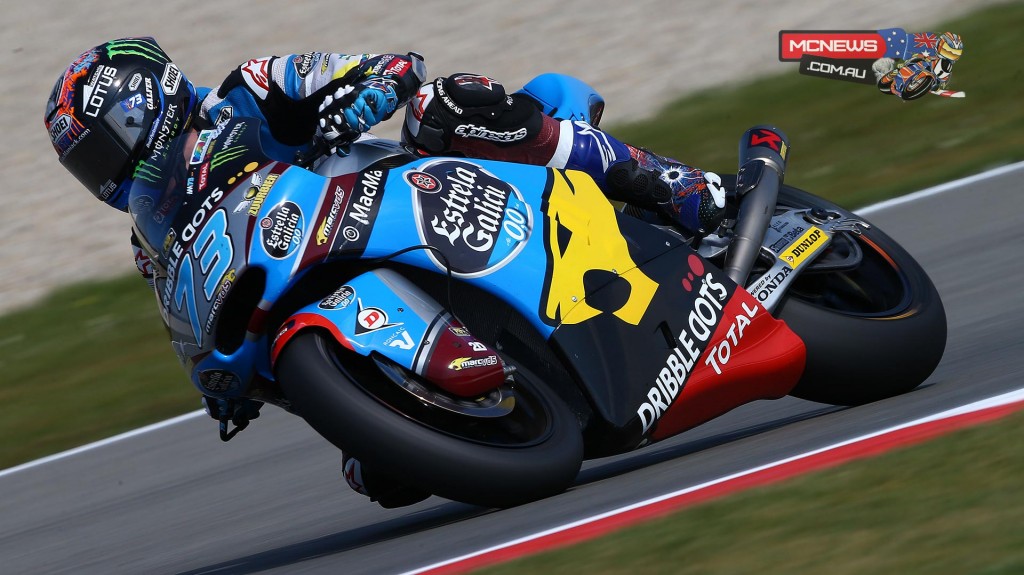
What has been the toughest GP so far?
The Grand Prix of the Americas at Austin, because from the beginning of the year one of the things that was hardest for me most was heavy braking, using the clutch stopping the bike. Slides entering the corners are very pretty but not very effective. The fastest riders don’t twist the bike much under braking and my problem was that on corner entry. I couldn’t set myself up for the exit. The entry was very fast and very spectacular, but I lost a lot of time that way. Austin, which is a very hard braking circuit, was tough for this reason. When we arrived at other circuits with heavy braking, we realised that this was an aspect where we had a lot of room for improvement. We have now achieved, with some adjustments of the clutch and changing my driving style a lot better at this point.
Which circuit have you found most comfortable with the Moto2 bike?
I felt very comfortable at the Assen circuit, right from the beginning. I was between fifth and tenth place from the start, which made things even more fun and I enjoyed myself on the bike. If you are at the front at a track you will always find it more comfortable. I don’t think any rider says he is comfortable at a circuit where he has placed twentieth.
Of the remaining Grands Prix this season, what are you most excited about?
Obviously both of the rounds in Spain. At MotorLand Aragon and Valencia there is a great atmosphere and fans who always motivate me a lot, plus I have always ridden well there. Indianapolis, Brno and Silverstone are also circuits that have been good to me in the past. I like circuits that are fast and wide. However, at the circuits that least suit me, I always I set out to be competitive, try to enjoy myself and get a good result. Last season, for example, Motegi was the circuit that on paper would be toughest for me, and we ended up winning there.
There is nobody better than you to give advice to Team Estrella Galicia 0,0 Moto3 riders Fabio Quartararo and Jorge Navarro. What have you told them?
I definitely try and help them out! Especially at circuits that are new to them. They also work with my telemetry and that of Álex Rins from last season, which can help them a lot. Sometimes I also go through to the box to greet the mechanics, and if it they are looking at the telemetry I sit down with them to review it. It’s a way to hang out with former colleagues and lend a hand at the same time.
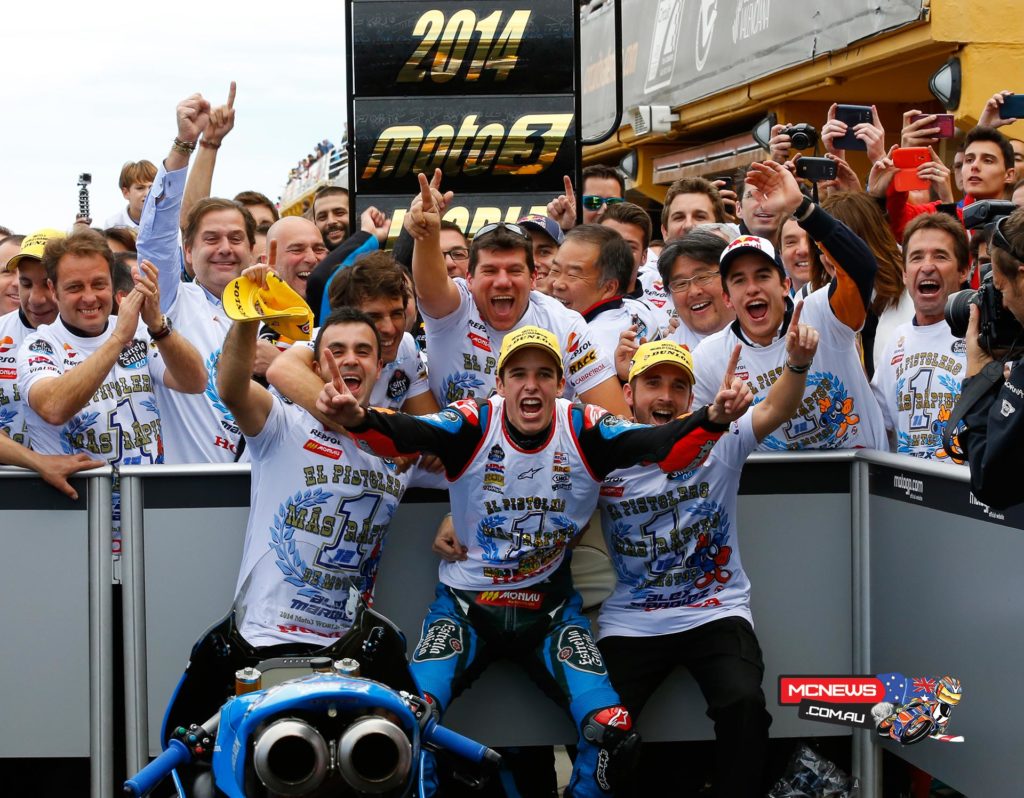
How do you assess their performance in the first half of the season?
I think they are both doing very well. For Jorge it took a while to get going and find the confidence and consistency that you need in the World Championship, and now it looks like it’s there and he is doing well. Fabio started strong and then had a couple of dips with his results, but it reminds me of my 2013 season; I had a strong start and then two races in which I crashed twice, but then by the end of the season I’d kept up a good level.
Do you think that the situations they are going through and the mistakes they have made are normal in a rookie season?
Yes, when you come from the FIM CEV Repsol, which has a different pace to the competition, and you make the leap to the World Championship, it is normal to go through these situations. In the case of Fabio [Quartararo], being a two-time Spanish champion and also doing very well at the first race in Qatar perhaps created some early season expectations that were premature. That generates a lot of pressure that leads to mistakes. It’s after the crashes that you stop and think: “Where should I be?” and focus on learning and keeping improving. Sometimes it is the pressure that you impose on yourself which leads to such situations. On the other hand, Jorge Navarro is experiencing great progress. He has also made some mistakes, but since he has taken things more calmly, the results are coming and he has demonstrated that he can be fighting in the leading group.
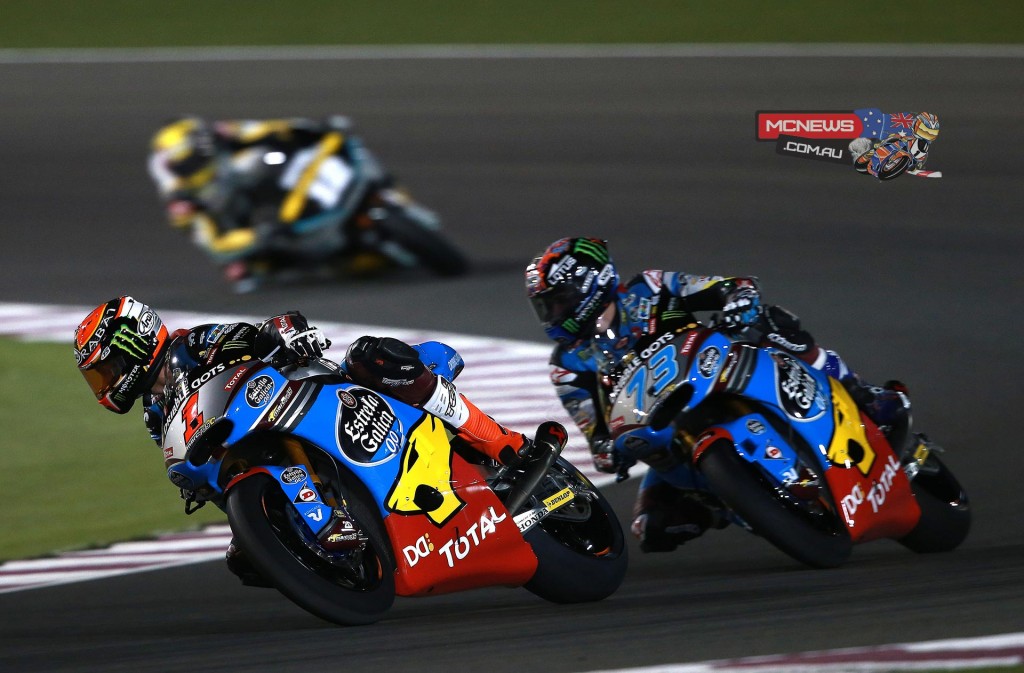
Now you have three weeks off, what are your plans?
One week will be to relax and spend time with friends. During the other two weeks I will continue with my training plan to be strong ahead of the next Grand Prix in Indianapolis.
Are you more a fan of the sea or mountains?
This year I’ll do a bit of everything. Mountain’s first, then a little time at the beach.
Do you relax your diet a little?
No, normally I don’t. Maybe one day with friends you let it slide a little at dinner, but I always eat healthy. I am lucky that I like to eat healthy, so I don’t have to make a great effort to follow a good diet.
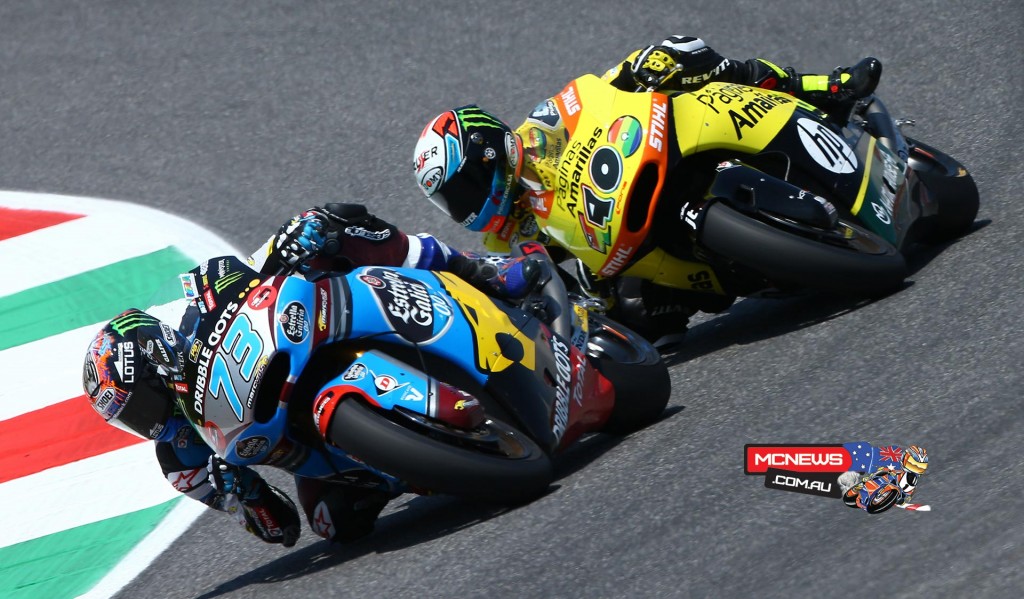
What is a perfect summer day for you?
I like to get up early, enjoy the freshness of the morning, go do a little cycling, then relax a little, eat and in the evening go for a drink with friends. Then load the bike onto the trailer and do some dirt track at night, when it is better. Afterwards, meet with friends and improvise a little (laughs).
Do you practice any watersport?
I’m not a sea kind of guy – I prefer the mountains. In fact I prefer the pool – it’s better to know what is at the bottom (laughs).
Do you prefer to stay in Spain or travel somewhere exotic?
As we travel so much during the year, I prefer to go to places that do not involve travelling more than two hours away. And when we get to the winter break, I move even less, with the cold. After the season finishes I feel like staying at home.
